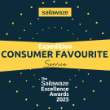In Search of Giants Expedition Cruise; 4 – 14 August 2024
The intention of this new cruise itinerary was to search for whales in the former whaling grounds on the west of Scotland and document what was found. This data could be a significant contribution to the knowledge of whales and their potential recovery, 70 years after whaling ceased there.
The plan was an expedition style trip as far west as weather would allow, with the timing informed by historical research on whaling landings. Scotland was home to five domestic whaling stations where fin, sei, blue, right, humpback, sperm and bottlenose whales were landed from 1903 to 1951. 501 blue whales were landed, mostly at Bunavoneader in Harris and they were caught to the west of the Outer Hebrides on the continental shelf edge. Searching for large baleen whales in Scotland is challenging, because so few remain. Nevertheless, we were keen to try!
A series of gales thwarted our ambitions to search the shelf-edge, however the waters of the North Minch generously compensated us for our search efforts. We carried out 17 cetacean surveys using Hebridean Whale and Dolphin Trusts’ biological recording scheme app (WhaleTrack). During these surveys we recorded 35 groups of common dolphins while harbour porpoise groups were seen 23 times. The next most abundant species was minke whale, with 10 sightings. The highlight of the trip was seeing humpback whales with four separate encounters of at least 6 individual whales. We were fortunate enough to see three fin whales also: the second heaviest animal in the history of life on earth!
Hebrides Cruises shares data and information with a variety of conservation organisations including HWDT, the Scottish Humpback Catalogue, Happywhale.com and iNaturalist. What incredible world we live in when we can find out who these whales are and where they have been, just by photographing their unique tail markings and sharing images with our colleagues and friends. Networking with local boat operators in the North Minch (big shout out to Steve Truluck, Dan Brown and Noel Hawkins!), we were able to increase our chances of finding whales. By mostly drifting near the whales, we earned some superb views of these giants. At times there were minke, humpback and fin whales all swimming around us.
Photographs of whales can help us piece together important pieces of information about their movements and ecology. Photos we took in the North Minch revealed that the humpback whales had not been to polar waters recently, because they had a low burden of fouling (brown diatom film on their skin) and barnacles. The opposite was the case for fin whales: a brown smear of diatoms coated their backs, indicating they came here from much further north. The humpback whales were also relatively young, with two yearlings and four or five immatures (<4 years old), judging by their body lengths and the greyness of the underside of their tail flukes.
One highlight of the trip was re-identifying the humpback known as “Nick”. Named by the Scottish Humpback Catalogue curator Lyndsey McNeill who previously matched it to photographs taken in Iceland. This whale has come to the Minch four years in a row, since it was first photographed there in 2021. Nick also appears in the global whale catalogue run by Happywhale. With access to the Happywhale algorithm and database, we were able to make photo-identification matches for the whales we were seeing in a matter of seconds.
These excursions to the former whaling grounds provide vital information on the number and type of whales in our waters and will help protect them in the future. Bit by bit, we can begin to piece together the migration routes and patterns of these whales as they recover from impacts of whaling. Our ambition is to provide the data that provides more information on these whales in the hope they keep returning to our waters in future so we can better get to know them and their habits.
Further "In Search of Giants" cruises are now in the calendar for 2025 (sold out), and 2026 which will provide vital year-on-year data for whale research and the recovery of these amazing animals.
Text & Photos: Dr Conor Ryan


























The quality of customer care was superb without exception. Special mention must be made about the attention to detail and genuine interest in the comfort, welfare and safety of guests. The quality of the meals was excellent; particularly from the perspective of a non meat eater who enjoyed a wide variety of meals each one of which was well cooked and presented. The cleanliness of the boat was exemplary – cannot say anything else!
Derek & Linda Kidd: 10 July 2017St Kilda and the isles of the Outer Hebrides